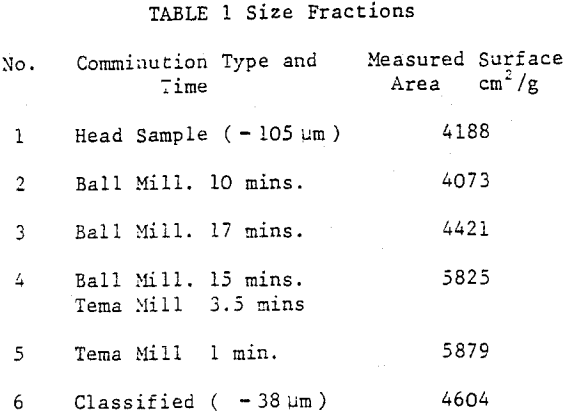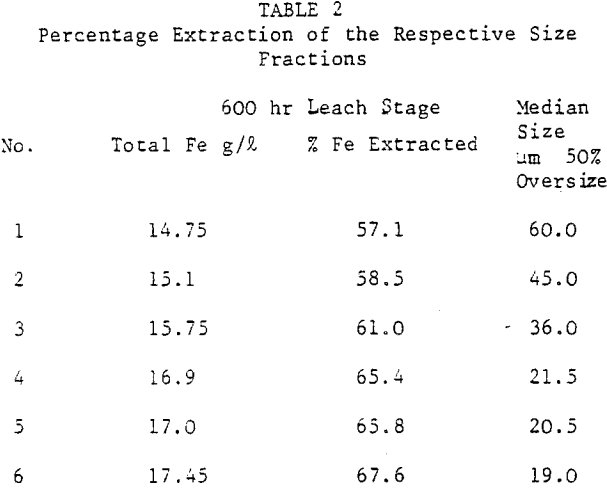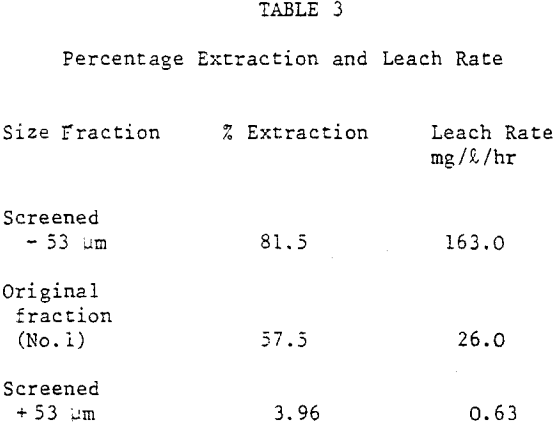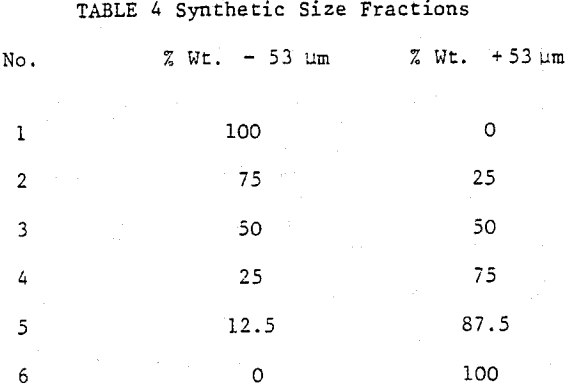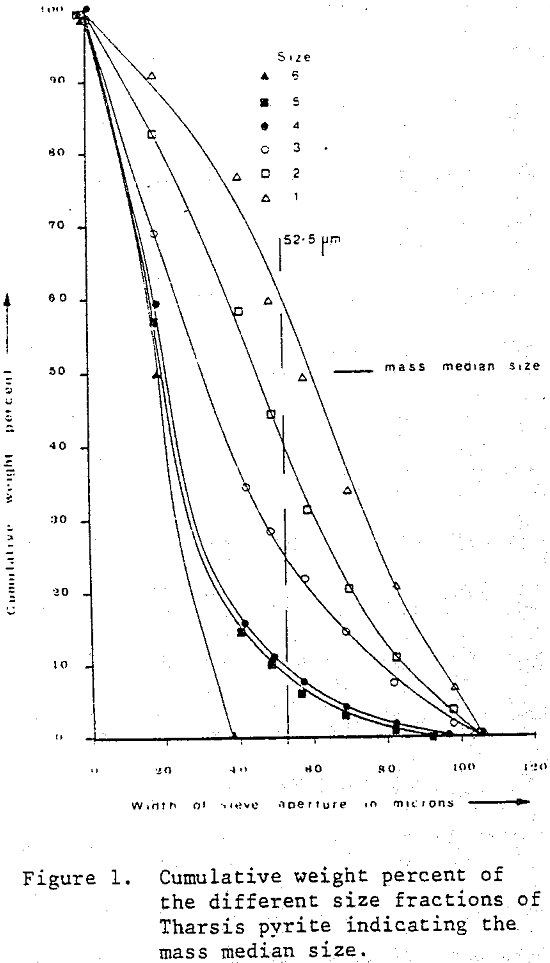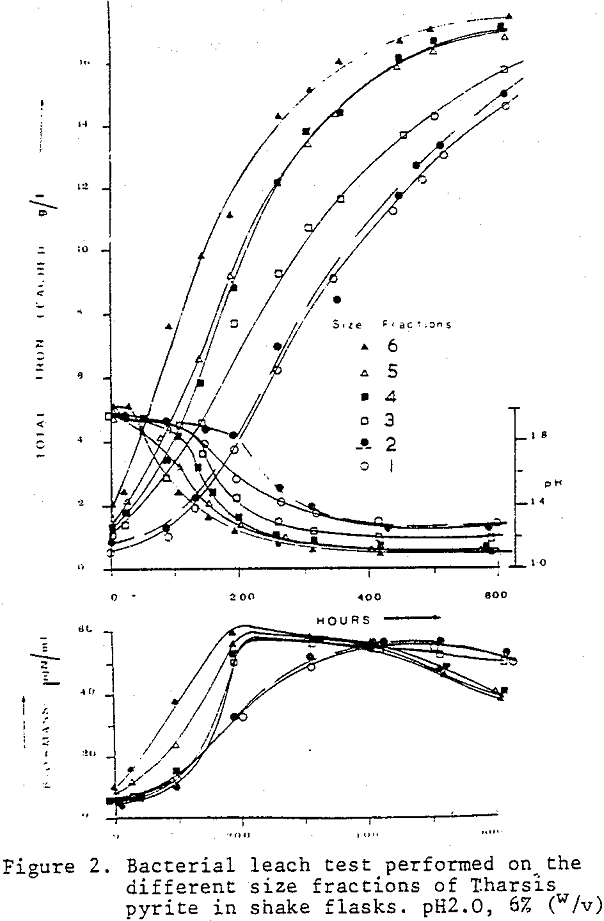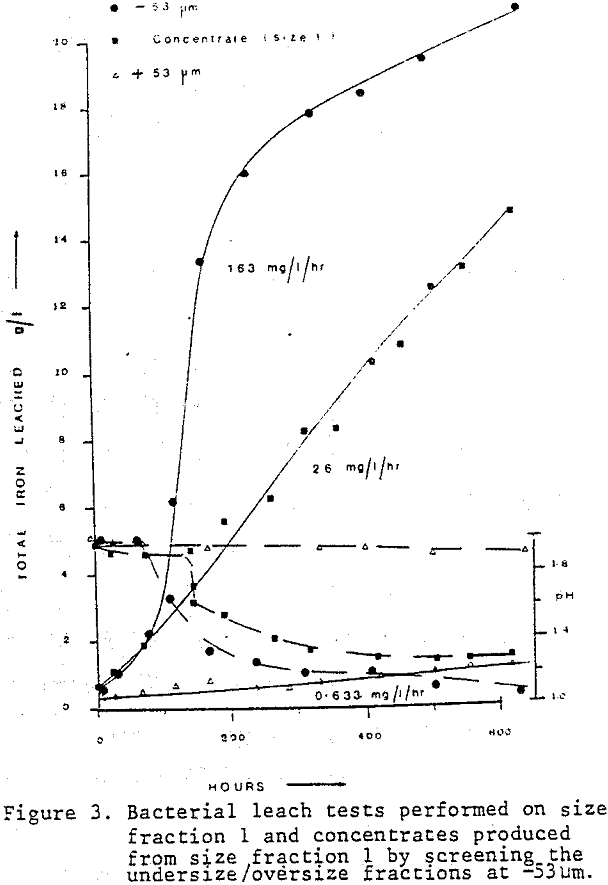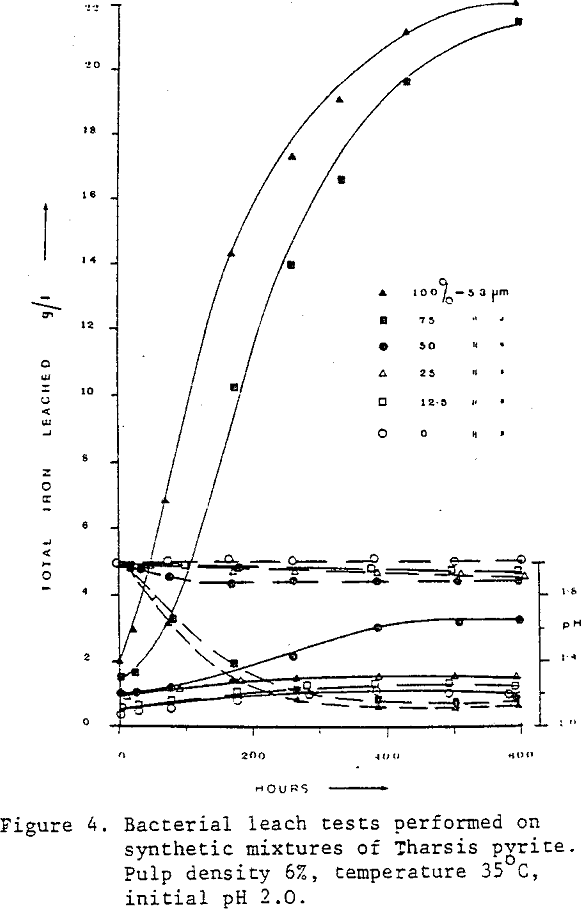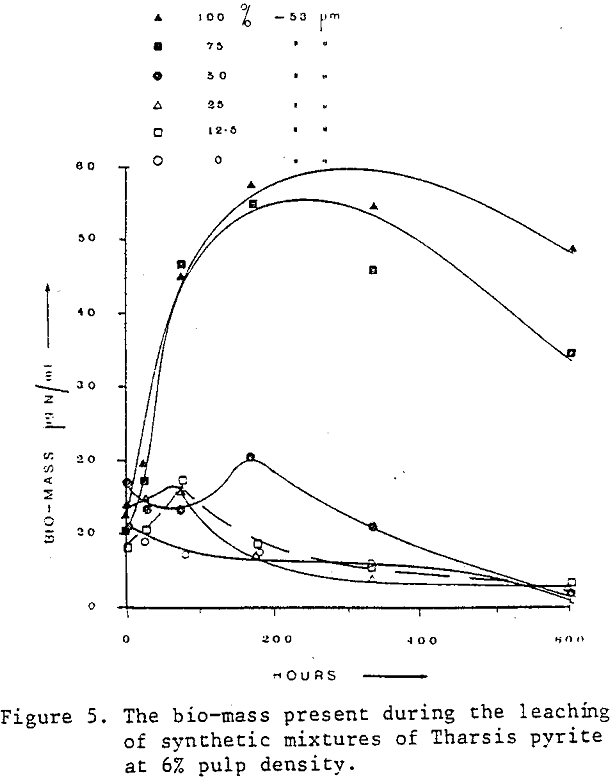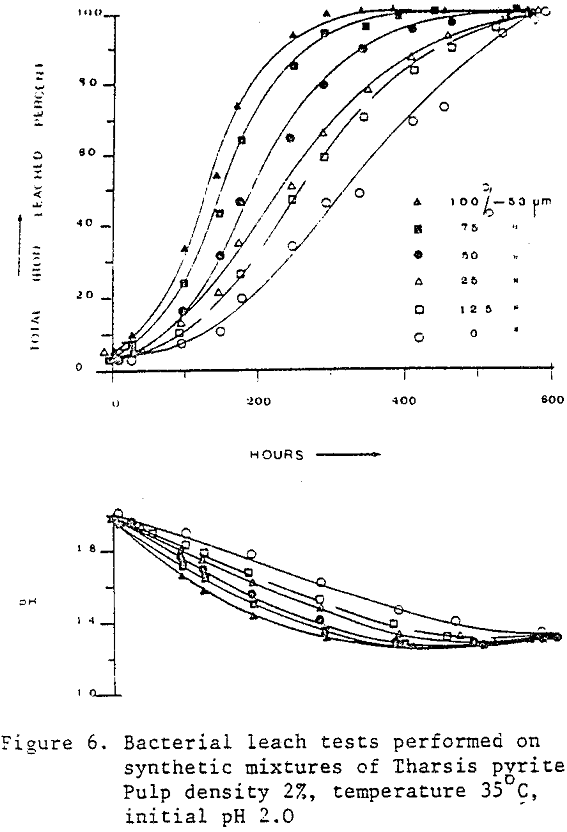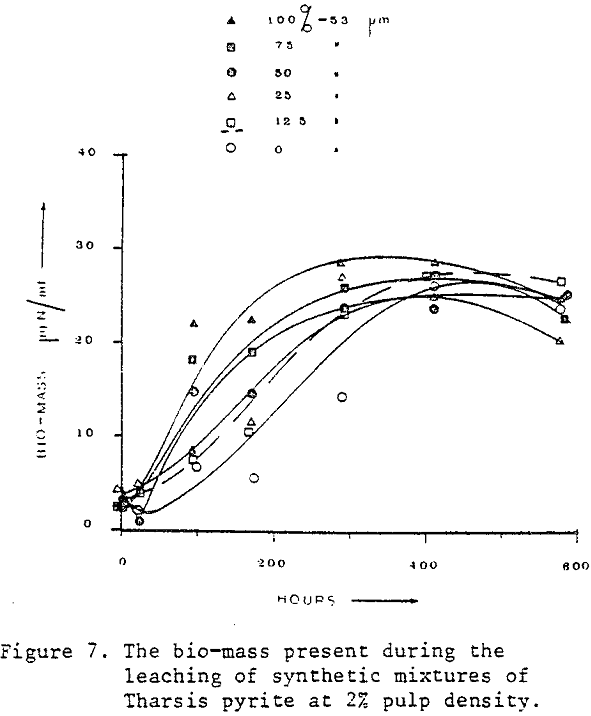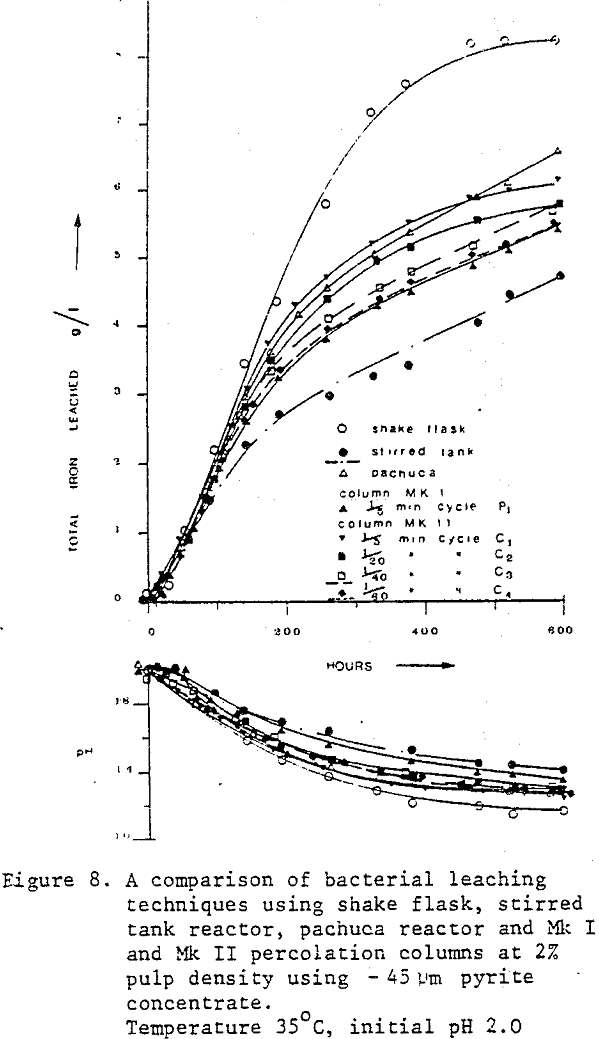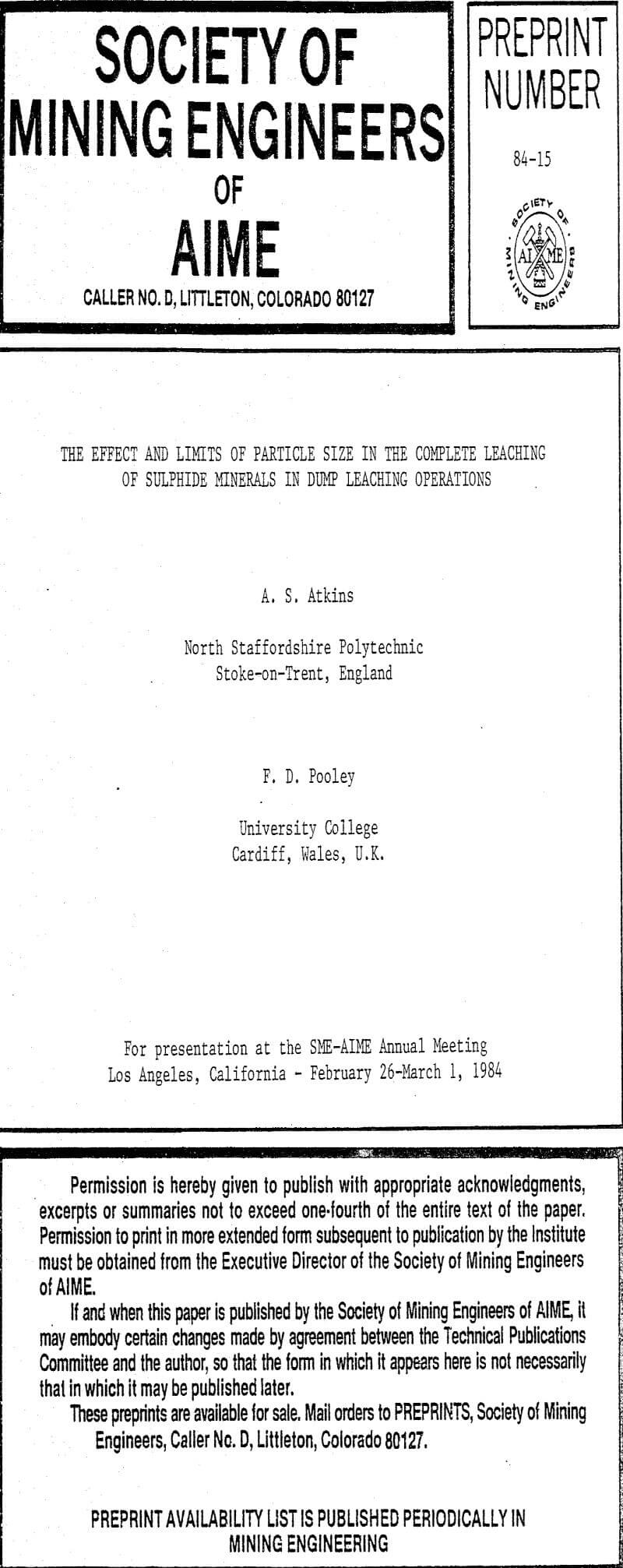Commercial leaching of sulphide ores by microorganisms is used in numerous oxidation situations as a scavenger process for treating low grade ores and very dilute metal waste streams at comparatively low capital and operating costs compared with conventional hydrometallurgical processes.
Studies using synthetic mixtures to give pre-determined surface areas have also revealed that the size distribution of the sample is an important parameter in predicting the leach rate regardless of the measured surface area. Thus the presence of relatively coarse particles inhibited considerably the expected leach rate which was attributed to pronounced attrition causing degradation of the bacterial cell.
Materials and Methods
The culture of iron oxidizing Thiobacillus ferrooxidans which were originally isolated by a dilution enrichment technique and grown on a variety of metal sulphide concentrates including iron, copper, nickel, lead, zinc and arsenic etc. were used throughout the experimental study.
The leaching of sulphide concentrates usually gives rise to insoluble reaction complexes and in this study ‘total metal’ concentrates were treated with 5N hydrochloric acid and the ‘soluble metal’ concentrates were both analysed by atomic absorption spectrophotometry.
This consists of culturing the bacteria with the pyrite concentrate in a 500 ml Erlenmeyer flask containing 100 ml of suspension in an orbital incubator maintained at 35 C and 250 rev/min.
Results and Discussion
To investigate the effect of surface area and the problems of size distribution during the bacterial oxidation of pyrite, a sample of Tharsis pyrite approximately 5 kg was crushed and milled to produce a -105 µm (150 mesh B.S.) concentrate. The object of the test was to progressively deplete the coarse end fraction of the concentrate and produce a series of consecutively finer concentrates.
The individual samples were prepared at 6% ( w/v) pulp density and bacterially oxidized (an inoculum datum of 1×10 9 cells/ml, suspension/1% (w/v) pulp density was used throughout the experimental study.). This corresponds to a pH value of approximately 1.3 to 1.2 for the respective samples. In the case of size fraction 1 and 2 the biomass reached a maximum at about 400 hours also corresponding to a pH value or 1.3. This implies that terminal growth of the bacteria corresponds to a pH value of approximately 1.3 indicating that the maximum bacterial activity is within the pH range of 2.0 to 1.3.
The results presented in this study have demonstrated that, although the mass median particle size has been varied from 19 to 60 µm the leaching characteristics using shake flask techniques are reasonably the same. However, increasing the particle size above a specific limit in bacterial leaching studies compared to a mere chemical reaction can have pronounced detrimental effects.
A similar series of tests were performed on the same size fraction reducing the pulp density to 2% (w/v). The test demonstrates that decreasing the pulp density from 6% to 2% (w/v) reduces the attrition of the bacterial culture . The result also demonstrates that particles ranging from 0 to 105 µm can be leached to completion providing the effect of bacterial attrition can be eliminated.
The leach test demonstrates that the iron extraction in the agitated system particularly the stirred tank reactor, as expected is affected by the presence of the coarse and fraction of the concentrate. In the static system using percolation columns as represented by the MkII model, the percentage extraction, although reduced in the case of columns with a cycle time of 1/5 minutes, has, however, resulted in a closed spectra of extraction in all the columns at different pumping cycles varying from 65.0 to 71.2 percent iron.
